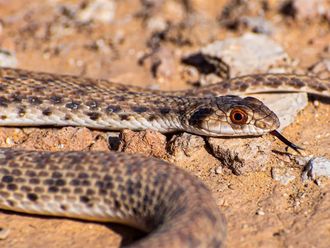
Cairo: Saudi environmental police and wildlife protection officials have caught two expatriates and a citizen for owning and displaying endangered animals in the Eastern Province.
The three, including an Egyptian man and an Indian national, are accused of violating the kingdom's environmental law and rules on protecting wildlife creatures.
The seized animals were handed over to the National Centre for Wildlife (NCW), the Special Forces for Environmental Security (SFES) said without specifying the animals.
Displaying endangered animals in the kingdom is punishable by imprisonment up to 10 years and a maximum fine of SR30 million or one of both penalties, according to SFES.
Saudi Arabia has banned dealing in endangered animals in any manner, including keeping and putting them on show.
SFES in collaboration with NCW recently uncovered illegal attempts to own and display wildlife creatures.
In July, the environmental police reported a raid on an illegal place in the city of H'ail in north-western Saudi Arabia where a Pakistani national had kept wild animals.
During the crackdown, a total of 32 animals and birds including endangered creatures were seized.
They included a lion, gazelles, ostriches and eagles.
In recent months, incidents involving fierce animals have been reported in the kingdom. In May last year, the Saudi environmental police said they had restrained a lion found on the loose in the capital Riyadh. SFES said the beast had been brought under control and handed over to a specialist agency.
Also, that month, Saudi security agencies and wildlife inspectors raided an establishment illegally keeping and displaying beasts including a lion and a tiger in the southwestern region of Asir region.
In 2021, Saudi authorities warned against the illegal rearing of predators after a lion mauled its keeper to death in Riyadh. The illegal purchase of wild animals is believed to have thrived due to social media where they are marketed.









